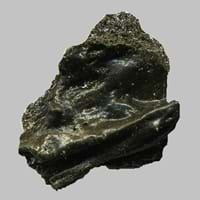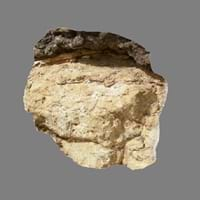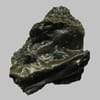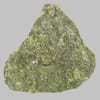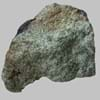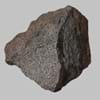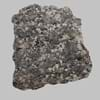Tachylite and Laterite
Definition
Definition
Tachylite is a vitreous form of basaltic volcanic glass. This glass is formed naturally by the rapid cooling of molten basalt
Laterite rock is a type of Sedimentary rock which is rich in iron and aluminium, formed in hot and wet tropical areas
History
Origin
Iceland
India
Discoverer
Unknown
Francis Buchanan-Hamilton
Etymology
From German Tachylite, from tachy- + Greek lutos soluble, melting
From Latin later brick, tile + -ite1
Class
Igneous Rocks
Sedimentary Rocks
Sub-Class
Durable Rock, Medium Hardness Rock
Durable Rock, Soft Rock
Family
Group
Volcanic
Not Applicable
Other Categories
Coarse Grained Rock, Fine Grained Rock, Medium Grained Rock, Opaque Rock
Fine Grained Rock, Opaque Rock
Texture
Texture
Vitreous
Earthy, Massive, Porphyritic
Color
Black, Dark Brown
Brown, Buff, Red
Maintenance
More
Less
Durability
Durable
Durable
Water Resistant
Yes
No
Scratch Resistant
No
No
Stain Resistant
No
No
Wind Resistant
Yes
No
Acid Resistant
Yes
No
Appearance
Glassy
Rough and Banded
Uses
Architecture
Interior Uses
Decorative Aggregates, Interior Decoration
Decorative Aggregates, Flooring, Interior Decoration
Exterior Uses
As Building Stone, As Facing Stone, Garden Decoration, Paving Stone
As Building Stone, As Facing Stone, Garden Decoration
Other Architectural Uses
Curbing
Curbing
Industry
Construction Industry
Cutting Tool, Knives, Landscaping, Scrapers
Cobblestones, for Road Aggregate, Landscaping, Roadstone
Medical Industry
Not Yet Used
Not Yet Used
Antiquity Uses
Artifacts
Artifacts, Monuments, Sculpture
Other Uses
Commercial Uses
Cemetery Markers, Creating Artwork
An Oil and Gas Reservoir, Source of bauxite, Used in aquariums
Types
Types
Not Available
Not Available
Features
Available in Lots of Colors and Patterns, Clasts are smooth to touch, NA
Is one of the oldest rock, Very fine grained rock
Archaeological Significance
Monuments
Not Yet Used
Used
Famous Monuments
Not Applicable
Data Not Available
Sculpture
Not Yet Used
Used
Famous Sculptures
Not Applicable
Data Not Available
Pictographs
Used
Used
Petroglyphs
Used
Used
Figurines
Not Yet Used
Used
Fossils
Absent
Present
Formation
Formation
Tachylite is a fine-grained, hard rock which is a type of metasomatite, essentially altered basalt. It forms with or without crystallization, either below the surface as intrusive rocks or on the surface as extrusive rocks.
Laterite is a type of sedimentary rock which is generally a reddish weathering product of basalt.
Composition
Mineral Content
Feldspar, Olivine
Aluminum Oxides, Biotite, Hematite, Hornblade, Iron Oxides, Manganese Oxides, Micas, Muscovite or Illite, Plagioclase, Pyroxene
Compound Content
Fe, Mg
Aluminium Oxide, CaO, Iron(III) Oxide, FeO, Potassium Oxide, MgO, MnO, Sodium Oxide, Phosphorus Pentoxide, Silicon Dioxide, Titanium Dioxide
Transformation
Metamorphism
Yes
No
Types of Metamorphism
Burial Metamorphism, Cataclastic Metamorphism, Contact Metamorphism, Hydrothermal Metamorphism, Impact Metamorphism, Regional Metamorphism
Not Applicable
Weathering
Yes
Yes
Types of Weathering
Biological Weathering, Chemical Weathering, Mechanical Weathering
Biological Weathering, Chemical Weathering
Erosion
Yes
Yes
Types of Erosion
Chemical Erosion, Sea Erosion, Water Erosion, Wind Erosion
Chemical Erosion, Water Erosion, Wind Erosion
Properties
Physical Properties
Hardness
5.5
2
Grain Size
Medium to Fine Coarse Grained
Fine Grained
Fracture
Conchoidal
Conchoidal
Streak
Vermilion
White
Porosity
Less Porous
Highly Porous
Luster
Resinous
Dull
Compressive Strength
206.00 N/mm2
8
Not Available
Cleavage
Not Available
Not Applicable
Toughness
Not Available
Not Available
Specific Gravity
2.4
Not Available
Transparency
Opaque
Opaque
Density
3.058 g/cm3
Not Available
Thermal Properties
Specific Heat Capacity
0.56 kJ/Kg K
22
Not Available
Resistance
Heat Resistant, Impact Resistant, Wear Resistant
Heat Resistant, Pressure Resistant
Reserves
Deposits in Eastern Continents
Asia
Cambodia, Russia, South Korea
India
Africa
East Africa
East Africa, Western Africa
Europe
England, Germany, Hungary, Iceland, Scotland, Sweden
England, Romania, Scotland
Others
Hawaii Islands
Not Yet Found
Deposits in Western Continents
North America
USA
Canada, USA
South America
Not Yet Found
Not Yet Found
Deposits in Oceania Continent
Australia
Victoria
Central Australia, Western Australia
All about Tachylite and Laterite Properties
Know all about Tachylite and Laterite properties here. All properties of rocks are important as they define the type of rock and its application. Tachylite belongs to Igneous Rocks while Laterite belongs to Sedimentary Rocks.Texture of Tachylite is Vitreous whereas that of Laterite is Earthy, Massive, Porphyritic. Tachylite appears Glassy and Laterite appears Rough and Banded. The luster of Tachylite is resinous while that of Laterite is dull. Tachylite is available in black, dark brown colors whereas Laterite is available in brown, buff, red colors. The commercial uses of Tachylite are cemetery markers, creating artwork and that of Laterite are an oil and gas reservoir, source of bauxite, used in aquariums.
|
||
|
||
|
